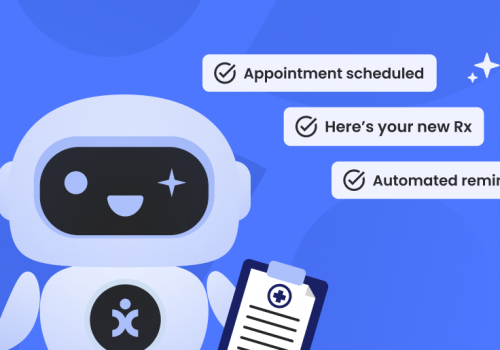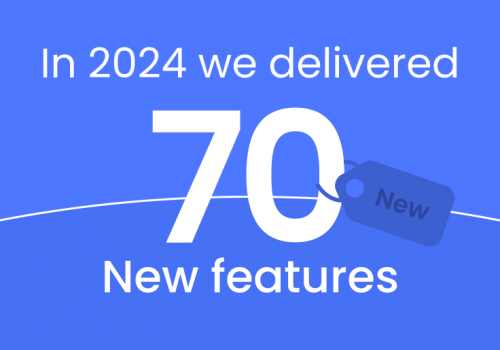B2B SaaS GTM Framework. It’s never too early to develop your SaaS go-to-market (GTM) strategy. In fact, if you’re doing this before your SaaS is fully developed, then you’re already leagues ahead of many of your competitors. In this guide, we’re going to dive into how to build your B2B SaaS GTM framework for ultimate success. Let’s take a look.
What is a GTM Strategy?
A GTM strategy is an action plan that details how your company will reach its target customer and achieve a competitive advantage. It outlines how you should deliver a service to the end customer. Here are some of the aims of a GTM strategy:
- Reducing time to market for services.
- Clearly defining a plan so all stakeholders are clear on the direction and goals of the business.
- Minimizing the chances of extra or unexpected costs.
- Improving the ability to react to changes and customer feedback.
- A blueprint for growth.
- Ensuring regulatory compliance.
- Increasing the chances of a successful service launch.
How Does GTM Differ in a B2B Environment?
It should come as no surprise that there are fundamental differences between a regular SaaS company and a B2B SaaS company. When developing your GTM, it’s essential to be aware of these differences because they determine how you approach your strategy. Here’s how a B2B SaaS environment is different:
- Companies are your customers: In a B2B environment, your market to companies, not people, and this makes your strategy very different. You not only need to decide which are the best companies to approach first, but you also have to understand the structure and roles within the company. What’s the title or name of the person who has buying power? Who are your end-users?
- Outbound sales methods are available to you: In the B2C world, outbound sales methods like cold-calling or targeting people from a bought email list are frowned-upon and often met with resistance. In B2C, companies prefer to attract customers to them rather than approaching them directly. However, in B2B, outbound methods are accepted and encouraged.
- Target company size matters: Your GTM strategy will look different depending on the size of the company you target. You can use a one strategy fits all approach if you intend to target both tiny and very large businesses.
Tips and Best Practices For GTM Strategies

Keep it Simple
Your go-to-market strategy should fit on one page. Ensure you cover all the basics like what businesses you want to target, what channels you will use, and so on, but you don’t need to go into extreme detail. You can create other documentation to expand on your GTM strategy, but the key here is to be precise. Anyone should be able to read your GTM strategy and understand what you’re trying to do.
Work on Your GTM Alongside Your Product
You can create a better software service if you design it alongside your GTM strategy. Why? Because a lot of the work you do in each area is transferrable and supports both goals.
The market research you conduct for your software service can help you determine how to market your product too. If you know exactly where your product is heading, then you can use your GTM to start marketing your product before it’s fully completed. By working on both at the same time, you can also experiment with different audiences (different types of companies both in size and industry).
Tackle One Audience at a Time
Don’t think too broadly, to begin with. Instead, narrow your sights and focus on one audience at a time.
Common Mistakes to Avoid
Too Many Marketing Strategies at Once
You might be tempted to throw everything at the wall and see what sticks, but this isn’t a good strategy. When we focus on too many marketing strategies at once, we don’t give enough time and attention to any of them. It’s better to focus on getting a few strategies perfect than trying to do too much at once.
If you find your strategy is working, you can make small changes to ensure it works even better. If you’re not getting the results you were hoping for, you can use this data to figure out why. Is it because you haven’t accurately defined your target? Are you targeting the wrong businesses? Are you failing to communicate how your service adds value?. It’s much more cost-effective to start with one strategy, amend it, or move on to the next than to try five strategies simultaneously.
Too Many Markets
Much like marketing strategies, it’s essential to be specific and start small. When you start by targeting a few markets, your sales and marketing teams become experts in those industries. When they become experts, they have higher authority and perform better. As a small B2B SaaS company, your reputation is everything, and developing yourself as an industry expert is paramount. Going too broad can mean your teams get confused or become unfocused because they’re spreading themselves too thin.
Thinking Too Big
Many B2B SaaS companies make the mistake of thinking they should primarily target large enterprises. Large enterprises typically have much larger budgets for software and a higher number of users, and for a B2B SaaS company, this can mean more revenue. However, it’s not as simple as this in reality. Large enterprises typically have very long sales cycles and many decision-makers. Talks with large companies can last several months to a year before things start moving. There are simply too many people who need to weigh in on or approve contracts.
Budgets are also much more rigid. If a team decides they would benefit from your software, they can often have an uphill battle trying to convince their higher-ups to release the budget to make it possible. In large enterprises, teams are allocated set funds every year or in 3 or 5-year cycles. They carefully plan in advance where that money will be spent, often having a little leftover. You not only have to convince these teams that they need your software, but their approvers too, and maybe even the level above that. This can result in long talks without any action. It can also mean you get told that they can’t purchase right now but will consider you in next year’s budget.
By contrast, small companies don’t suffer from the same issues. They often have short sales cycles and few approvers. You might only have to convince one person to buy your service because they are the ultimate and only decision-maker. Sure, these companies might have fewer end-users and bring in less revenue per account, but you can successfully convert more of them than with large enterprises. In the early days of B2B SaaS, getting revenue in quickly so you can expand and improve should be a top priority.

Strategies to Grow Your SaaS Faster With a GTM Framework
Revamp Your Strategic Narrative
This means going back to the drawing board, taking a step back, looking at what your competitors are doing and what is going on in the market. Markets change quickly, and you need to be able to adapt and respond.
A strategic narrative can be thought of as a manifesto – it’s your unique outlook on addressing the problems going on in the industry right now. Revamping your strategy narrative can transform your GTM from one that isn’t working to one that captures your audience’s attention. Why? Because you need to be able to approach companies with an answer to their problem, and your solution needs to be distinct from your competitors.
Here are other ways revamping your market narrative can improve the success of your GTM strategy:
- Your GTM becomes tighter and more purposeful.
- Your employees have more direction and are clear on their aims.
Find the Most Lucrative Segment
The key here is to find the most lucrative segment, where you can have the highest impact. All B2B companies have an ideal segment where they can differentiate themselves better than everyone else – they solve problems more effectively than their competitors. It would be best if you determine the segments where you can add the most value and then decide which of those segments is the most lucrative.
Much like the other things we’ve touched on in this list, it’s about narrowing your sights rather than trying to be everything to everyone. It’s about specialization. You don’t want to be just another B2B SaaS company that is a clone of your competitors. If you focus tightly on one segment, you’ll find that you hone your skills and become even more embedded in that segment over time. Eventually, you become the dominant solution for that segment. Companies in that segment will recommend your service as the best solution to specific problems.
You can service all segments effectively and profitably, especially at the beginning, so don’t try to.
Dream 100
This is a strategy where you define your 100 dream customers. The idea here is that in any business, most of your revenue will come from about 20% of your clients. You just need to figure out who these dream clients are. You can start this exercise even if you don’t have any clients yet; it’s more about identifying the features your target audience should have. In other words, creating your ideal buyers and then going hunting for them in the real world. This exercise helps you narrow your marketing efforts and helps you design better software with your ideal buyers in mind.
Dream 100 is more of a concept for SaaS businesses in general, but it can still apply to B2B businesses. It just needs some adjusting. Maybe 100 customers (separate companies) is too big to visualize initially, so you can reduce this to 30, 20, or even 10.
Define Your Outbound Strategy
Once you’ve decided on your Dream 100, it’s time to start thinking of how you’re going to approach each segment. Outbound communications will likely form a significant part of this, and you should have a specific communications plan for each segment. Reaching out to companies is a delicate activity. Some companies will ignore you, and others might accuse you of spam, and so on. It’s paramount that you proceed by being deliberate and thoughtful and present messages in a way that is most likely to resonate with that company.




















